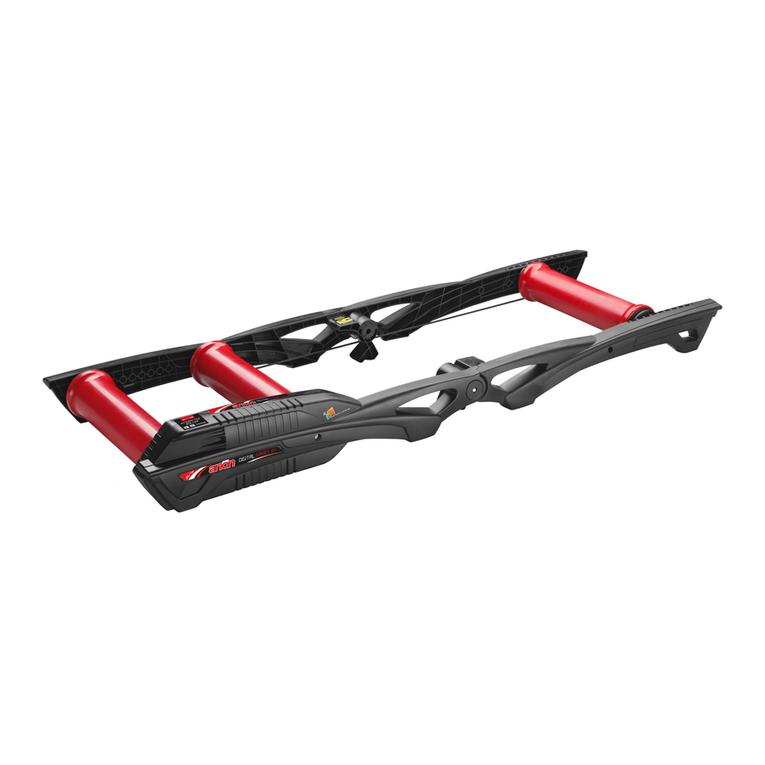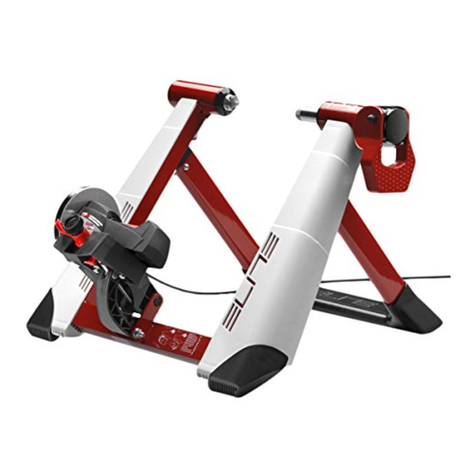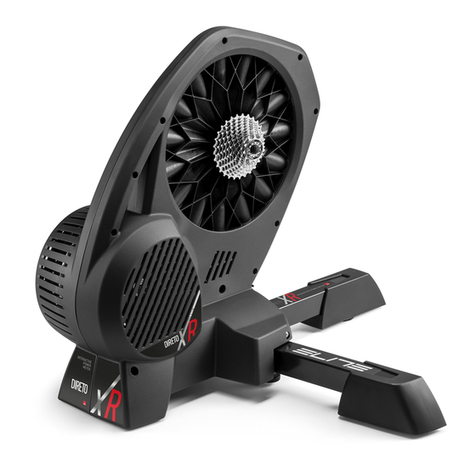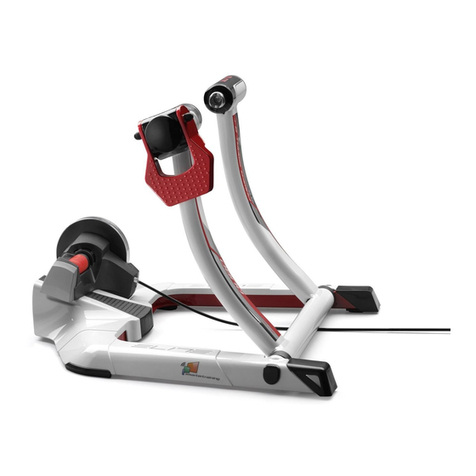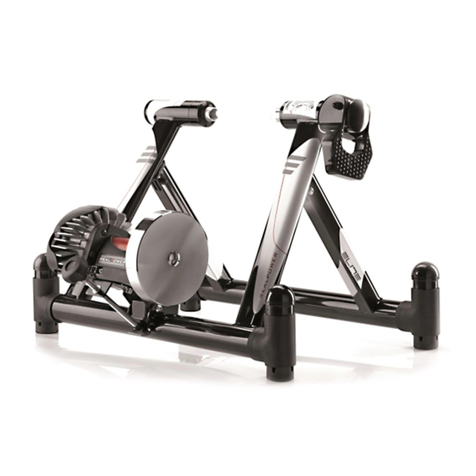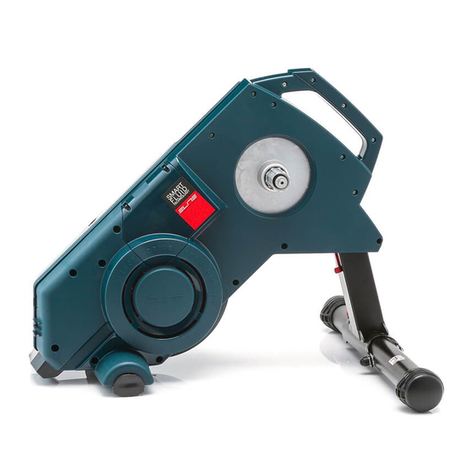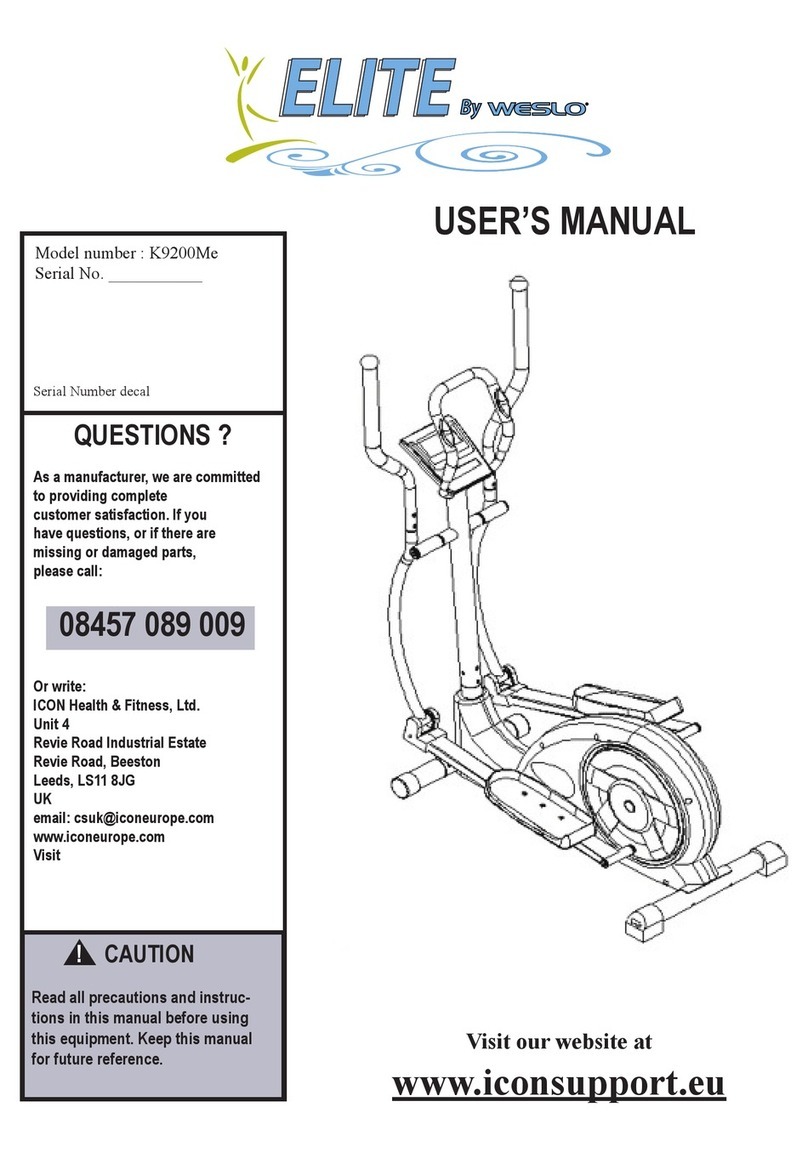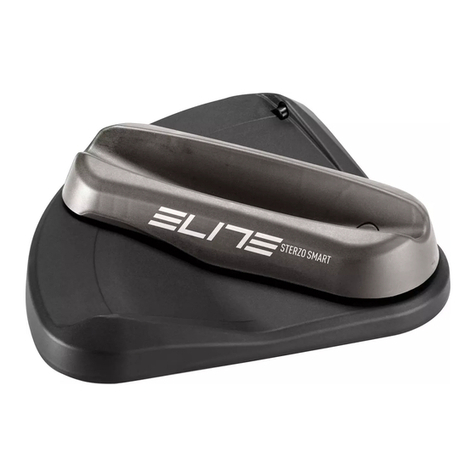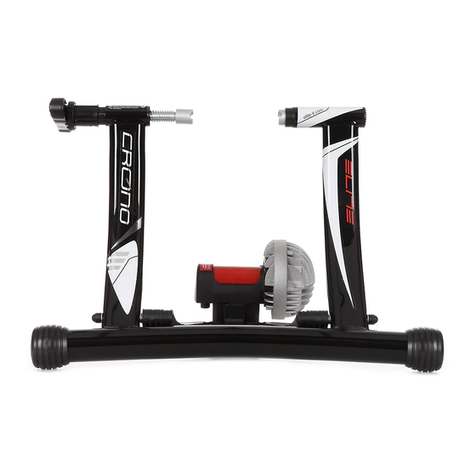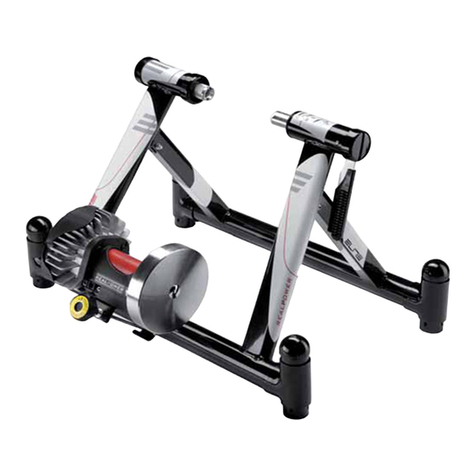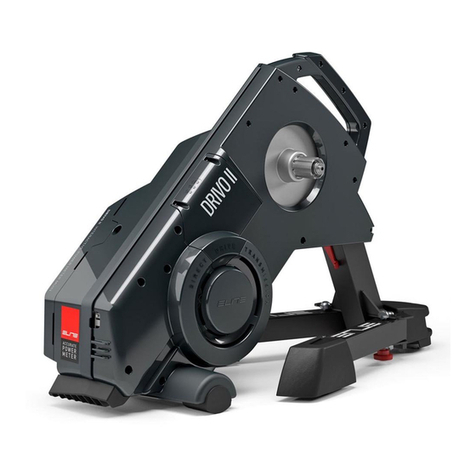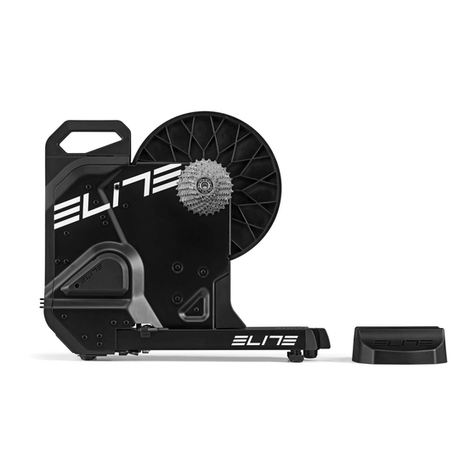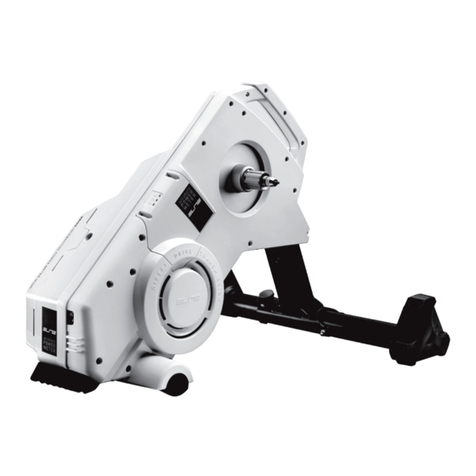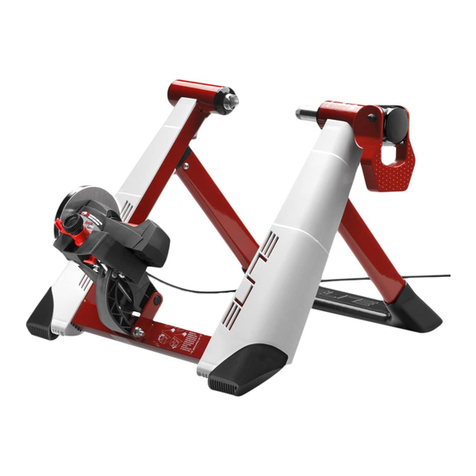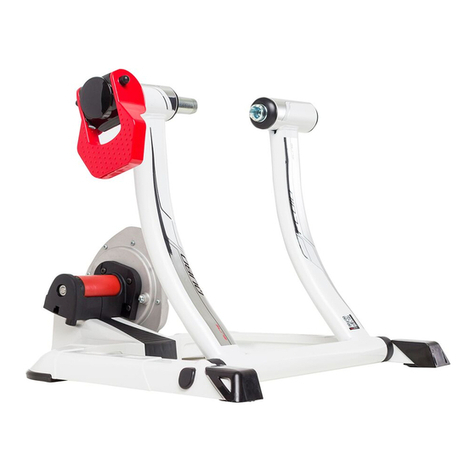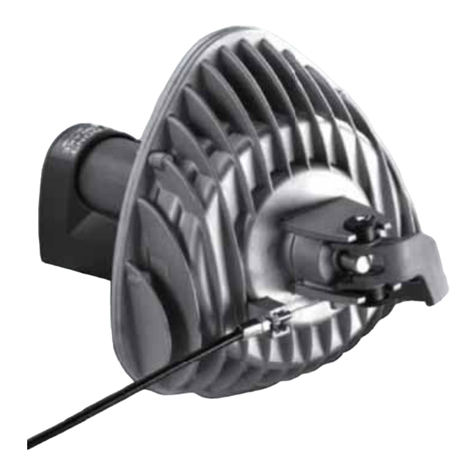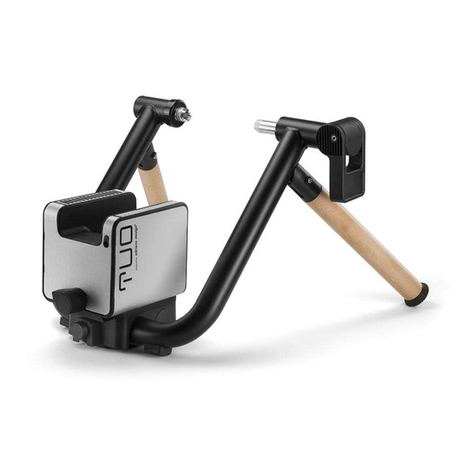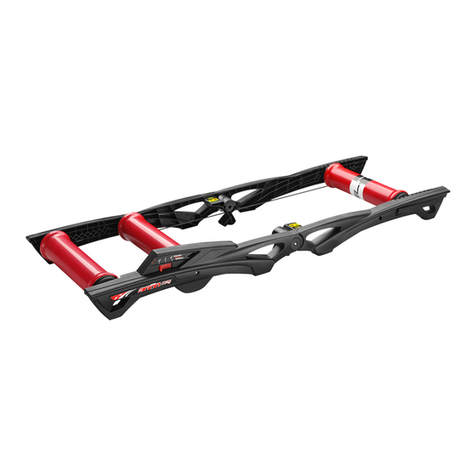
10
DE
Wir danken Ihnen für den Kauf des Novo
01_ALLGEMEINE SICHERHEITSHINWEISE
Bitte lesen Sie aus Sicherheitsgründen und
zum Schutz Ihrer eigenen Gesundheit vor
der Benutzung des Rollentrainers folgende
Hinweise:
1. Dieses Gerät ist nicht für die Verwen-
dung durch Personen vorgesehen (Kinder
eingeschlossen), die verminderte körperli-
che, sensorielle oder geistige Fähigkeiten
haben oder nicht über ausreichende Er-
fahrung und Kenntnisse verfügen, außer
sie werden beaufsichtigt oder haben
entsprechende erhalten.
2. Kinder sollten beaufsichtigt werden, um
sicherzustellen, dass sie nicht mit dem
Gerät spielen.
3. Lassen Sie sich vor Beginn des Trainings
einer sorgfältigen sportärztlichen Untersu-
chung unterziehen, um ihren aktuellen Ge-
sundheitszustand auszumachen.
4. Wählen Sie eine Trainingsmodalität, die
Ihrem Gesundheitszustand und Ihrer indi-
viduellen Leistungsfähigkeit angemessen
ist.
5. Brechen Sie das Training umgehend
ab und konsultieren Sie Ihren Arzt, wenn
Sie während des Trainings unerwartete
Ermüdungserscheinungen oder Schmer-
zen verspüren.
Die vorausgehenden Hinweise haben al-
lgemeinen Charakter und sie umfassen
nicht alle Vorsichtsmaßnahmen, die für
eine korrekte und sichere Benutzung des
Rollentrainers beachtet werden müssen,
für die ausschließlich der Benutzer verant-
wortlich ist.
02_ÄNDERUNGEN AN DEN PRODUKTEN
ELITE behält sich auch zur Anpassung an den
technologischen Fortschritt das Recht vor, Änderungen an
den Produkten oder ihren Spezifikationen vorzunehmen,
ohne den Kunden vorab darüber zu informieren, für:
a) Änderungen, die sich nicht negativ auf die Leistungen
des Produkts auswirken;
b) Änderungen, die erforderlich sind, um die Spezifikationen
des Produkts zu erfüllen oder zu verbessern;
c) Änderungen, die zur Anpassung an anwendbare
gesetzliche Bestimmungen oder Regelungen erforderlich
sind.
ELITE behält sich außerdem das Recht vor, die Produkte
mit diesen Verbesserungen ohne jede Verpflichtung zu
liefern, die gleichen Änderungen an den zuvor erworbenen
Produkten vorzunehmen, und behält sich außerdem das
Recht vor, die Preise und die Verfügbarkeit der Modelle in
Abhängigkeit von den Marktbedingungen, die Verfügbarkeit
der Komponenten sowie weiteren Erwägungen des
Unternehmens zu ändern.
03_EINLEITUNG
Überprüfen Sie, dass alle nachstehenden Komponenten
vorhanden sind:
N°1 Rahmen Novo (Bez. A)
N°1 Widerstandseinheit (Bez. B)
N°1 Halterung Einheit (Bez. C)
N°1 Schnellspanner
(Bez. D)
N°2 Stöpsel für Radgrößen über 28” (Bez. E)
N°1 Schraube (Bez. F)
N°2 Unterlegscheibe
(Bez. G)
N°1 Mutter (Bez. H)
N°1 Befestigungshebel (Bez. I)
ACHTUNG
Die Einheit in der Beschreibung dient nur als Beispiel
04_MONTAGE DES GESTELLS
• Das Gestell öffnen und auf einer ebener Fläche
positionieren.
• Die im Gestell vorhandenen Schrauben (F+G+H)
entfernen (Abb. 1).
• Die Halterung der Einheit (C) nehmen, mit den Fingern die
beiden im oberen Teil der Halterung vorhandenen Knöpfe
zuammendrücken (Abb. 2) und die Halterung in die beiden
Löcher des Rahmens einführen (Abb. 3 und Abb. 4).
• Unter Benutzung der in Abb. 1 vorhandenen Schrauben
(F+G+H) die Halterung der Einheit (C) am entsprechenden
Rahmen montieren (Abb. 5). Das korrekte Anzugsmoment
anwenden; andernfalls behindert man die Drehung der
Halterung der Einheit.

